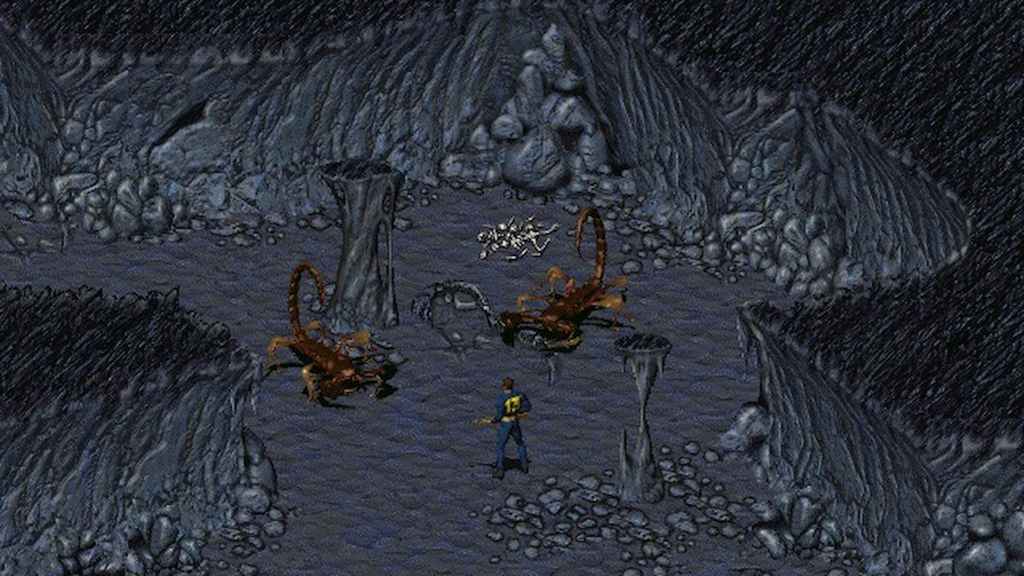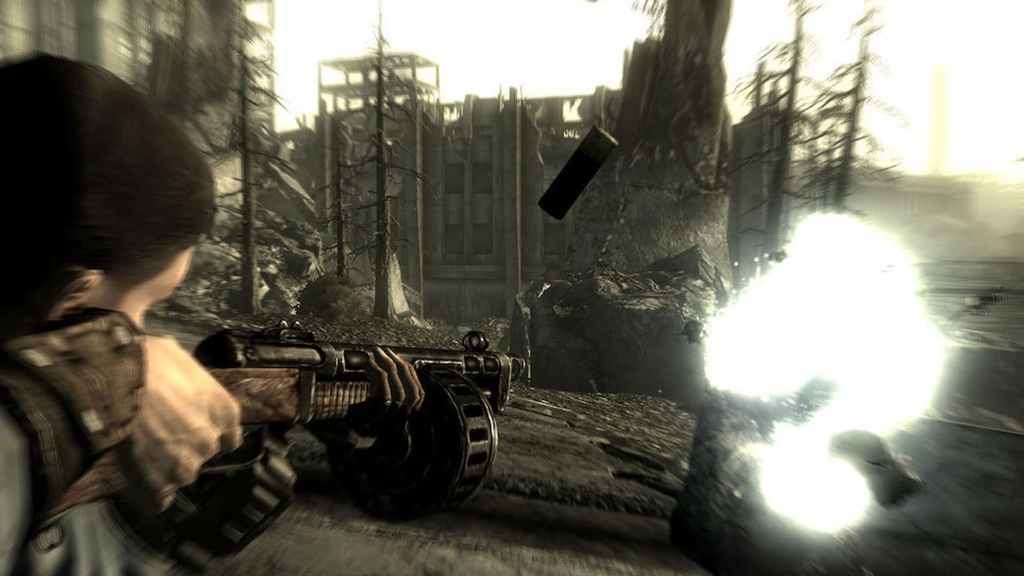The Fallout series is a household name in the gaming industry after Bethesda propelled it into mainstream audiences, even securing a television adaptation. Since the first game’s launch in 1997, it has redefined the open-world RPG, but many fans would be surprised to learn that Fallout was not created by Bethesda, but by another studio. Interplay Productions created the game, delivering a gritty, isometric, and turn-based role-playing game built on atmosphere, choice, and consequence. It blended dark humor and retro-futuristic elements that captured the imagination of PC gamers at a time when the genre was stagnant, revolutionizing storytelling and game design.
Videos by ComicBook.com
Those who started with Fallout 3, like me, would be shocked to see the differences with the first Fallout. Bethesda completely changed genres to the first-person sandbox fans know and love today. The original Fallout and its sequel were more about slow-burn decision-making than real-time shooting and exploring. In many ways, the first entry in the series and the norm today couldn’t be any more different.
A Different Wasteland: Fallout’s Origins Under Interplay

Fallout launched in 1997 and stood apart from almost every other CRPG. The genre was in decline in the 1990s, but Interplay Productions took a gamble in its creation. The 2D, isometric, turn-based RPG took inspiration from TTRPG classics like Wasteland, which the studio also worked on. Many games in the genre opted for a fantasy approach, especially Dungeons & Dragons games. Instead, Interplay Productions looked far into the future.
Set in an alternate timeline devastated by nuclear war, Fallout introduced players to a retro-futuristic world filled with moral ambiguity, biting satire, and branching narratives. Players emerge as a Vault Dweller sent into the wasteland to locate a replacement water chip for the underground community. This simple task soon unfolds into something more as the player makes various decisions that influence the story. Who you help, who you betray, and who you kill shapes the world around you. Towns could be saved or destroyed, and entire factions could rise or fall based on your actions.
Freedom of choice was at the heart of Interplay’s Fallout. The interface may have been clunky, especially by today’s standards, but the depth was staggering. Players could talk their way out of fights, charm enemies, or brute force their way through encounters. The SPECIAL system (Strength, Perception, Endurance, Charisma, Intelligence, Agility, Luck) defined who your character was, and was perfect for the unapologetically bleak yet deeply funny tone of the game.
How Fallout Saved the RPG Genre

By the mid-1990s, role-playing games were struggling. The genre that had once dominated PC gaming was falling to flashier and more action-oriented games. But Fallout revived Western RPGs. It proved that deep, choice-driven storytelling still had a place. Not only that, but it’s designed encouraged multiple playthroughs so that players can experience everything the game has to offer. It also introduced one of the greatest and most horrifying antagonists in the Master, an amalgamation of humans, super mutants, and a super computer.
Its sequel, Fallout 2, was released a year later and expanded on everything the original had done. It offered a bigger world, richer stories, and sharper writing. Interplay solidified the series as one of the foundations of the genre, and its influence can be seen in later titles like BioWare’s Baldur’s Gate or Troika Games’ Arcanum: Of Steamworks and Magick Obscura.
One of the remarkable aspects of Fallout that made it so endearing was how it relied on player imagination. The 2D sprites and overhead perspective allowed players to fill in the gaps. Every encounter, location, and consequence felt personal due to the art style and perspective. Fallout created so much immersion through its world. The choices were brutal, the humor was dark, and the outcomes were unpredictable, and fans still remember this today, with many wanting a remake of the original Fallout.
Bethesda’s Reinvention of Fallout

Bethesda acquired the Fallout license in the mid-2000s and put it through a radical transformation. It left its CRPG roots behind and embraced the 3D first-person exploration, real-time combat, and sprawling open-world environments seen in The Elder Scrolls IV: Oblivion. This was a jarring change for fans of the original and its tactical-turn-based battles.
Despite the shift, Bethesda managed to preserve the soul of Fallout. The wasteland was still brutal, the choices still meaningful, and the dark humor was just as good as ever. It may not have been the same game, but the heart was still there. Fallout 3 proved to be a critical success, pulling in even more fans into its grim and twisted world.
Bethesda’s transformation put even more emphasis on freedom, especially in exploration. Players could roam where they pleased and uncover stories at their own pace. The first steps out of Vault 101 and seeing the Capital Wasteland remain one of my core gaming memories to this day.
The series would continue seeing changes with each new iteration. Fallout: New Vegas bridged the gap between Fallout and Fallout 3, while Fallout 4 improved the gameplay mechanics while sacrificing some of the role-playing aspects. Fallout 76 went full MMO, bringing multiplayer to the series in a big way. This showed how versatile the Fallout series could be and how it adapts to new mechanics easily.
Twenty-eight years later, Fallout stands the test of time. The series may have changed dramatically over the years, to the point where modern fans wouldn’t recognize the older games, but it has maintained its identity. Its themes of moral ambiguity, player freedom, and post-nuclear irony continue to shape the series and inspire the developer, regardless of who has the reins.
What do you think? Leave a comment below and join the conversation now in the ComicBook Forum!








